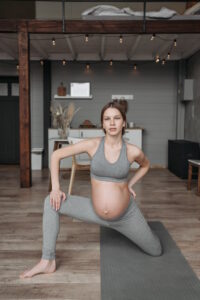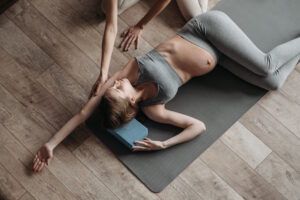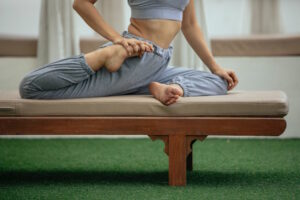
Pregnancy is a time of profound physical and emotional change, and maintaining a healthy body and mind is paramount. Pilates, with its emphasis on core strength, flexibility, and mindful movement, can be an excellent choice for expectant mothers. Central to the practice of Pilates is the art of breathing, a fundamental element that plays a crucial role in both fitness and relaxation. In this comprehensive guide, we’ll explore the significance of proper breathing techniques in pregnancy Pilates, offering insights into how to breathe effectively, what to avoid, and how to safely incorporate Pilates into your prenatal routine.
What Are the Breathing Techniques for Pilates?
Proper breathing techniques are foundational in Pilates, and they remain essential during pregnancy. The primary Pilates breathing technique involves lateral breathing, also known as ribcage or diaphragmatic breathing. Here’s how it works:
1. Inhale deeply through your nose, focusing on expanding your ribcage to the sides and front.
2. Exhale fully and completely through your mouth, engaging your deep core muscles.
3. As you exhale, imagine drawing your navel toward your spine.
This method of breathing encourages full oxygen exchange, helps engage the core muscles, and promotes relaxation. It’s crucial to coordinate your breath with the movement, inhaling during the preparatory phase and exhaling during the effort phase of an exercise.
What Is the Breathing Technique Used in Pregnancy?
During pregnancy, the importance of proper breathing techniques becomes even more pronounced. As your body changes and your baby grows, the diaphragm, which is responsible for your breath, has less space to move. Therefore, it’s crucial to focus on deep, diaphragmatic breaths to ensure both you and your baby receive adequate oxygen.
In pregnancy Pilates, it’s beneficial to combine diaphragmatic breathing with specific modifications:
1. Inhale: Expand your ribcage to the sides and front, allowing your belly to rise gently.
2. Exhale: Gradually draw your navel toward your spine while engaging the pelvic floor muscles.
This combination supports core engagement and helps prevent diastasis recti, a condition where the abdominal muscles separate during pregnancy.
What Pilates Moves to Avoid When Pregnant?
While Pilates can be a safe and effective exercise during pregnancy, there are specific movements and positions that should be avoided to ensure the safety and comfort of both you and your baby. Exercises that involve lying flat on your back after the first trimester can put pressure on a major vein and reduce blood flow to the baby. Additionally, deep backbends and intense twisting movements should be approached with caution. High-impact exercises, exercises that strain the abdominal muscles excessively, and those that cause discomfort or pain should also be avoided.
How to Do Pilates While Pregnant?
Doing Pilates while pregnant requires a few important considerations to ensure safety and effectiveness:
1. Consult Your Healthcare Provider: Before starting or continuing any exercise program during pregnancy, it’s crucial to consult your healthcare provider to ensure it’s safe for you and your baby.
2. Choose a Certified Prenatal Pilates Instructor: Working with a certified instructor who understands the unique needs of pregnant women can provide guidance on appropriate modifications and exercises.
3. Focus on Core Engagement: Prioritize exercises that engage the core gently and effectively without straining the abdominal muscles.
4. Use Props and Modifications: Props like stability balls and foam rollers can add support and comfort to your Pilates practice. Modify exercises to accommodate your changing body and avoid positions that cause discomfort.
Summarizing the Answers
Breathing techniques are a fundamental aspect of Pilates, and they remain essential during pregnancy. The primary Pilates breathing technique involves lateral or diaphragmatic breathing, focusing on expanding the ribcage and engaging the core. During pregnancy, combining diaphragmatic breathing with specific modifications supports core engagement and prevents diastasis recti.
When practicing Pilates while pregnant, it’s crucial to consult your healthcare provider, work with a certified prenatal Pilates instructor, and prioritize exercises that engage the core gently and effectively. Avoid exercises that involve lying flat on your back, deep backbends, intense twisting movements, and those that cause discomfort or pain. By incorporating proper breathing techniques and making safe modifications, you can enjoy the benefits of Pilates while nurturing a healthy and comfortable pregnancy journey for both you and your baby.








